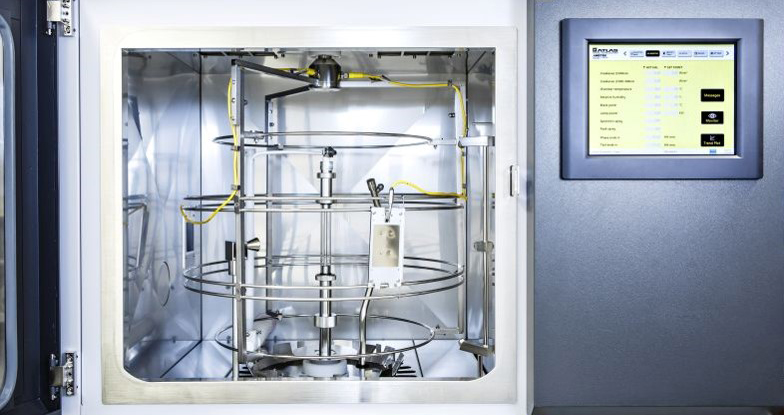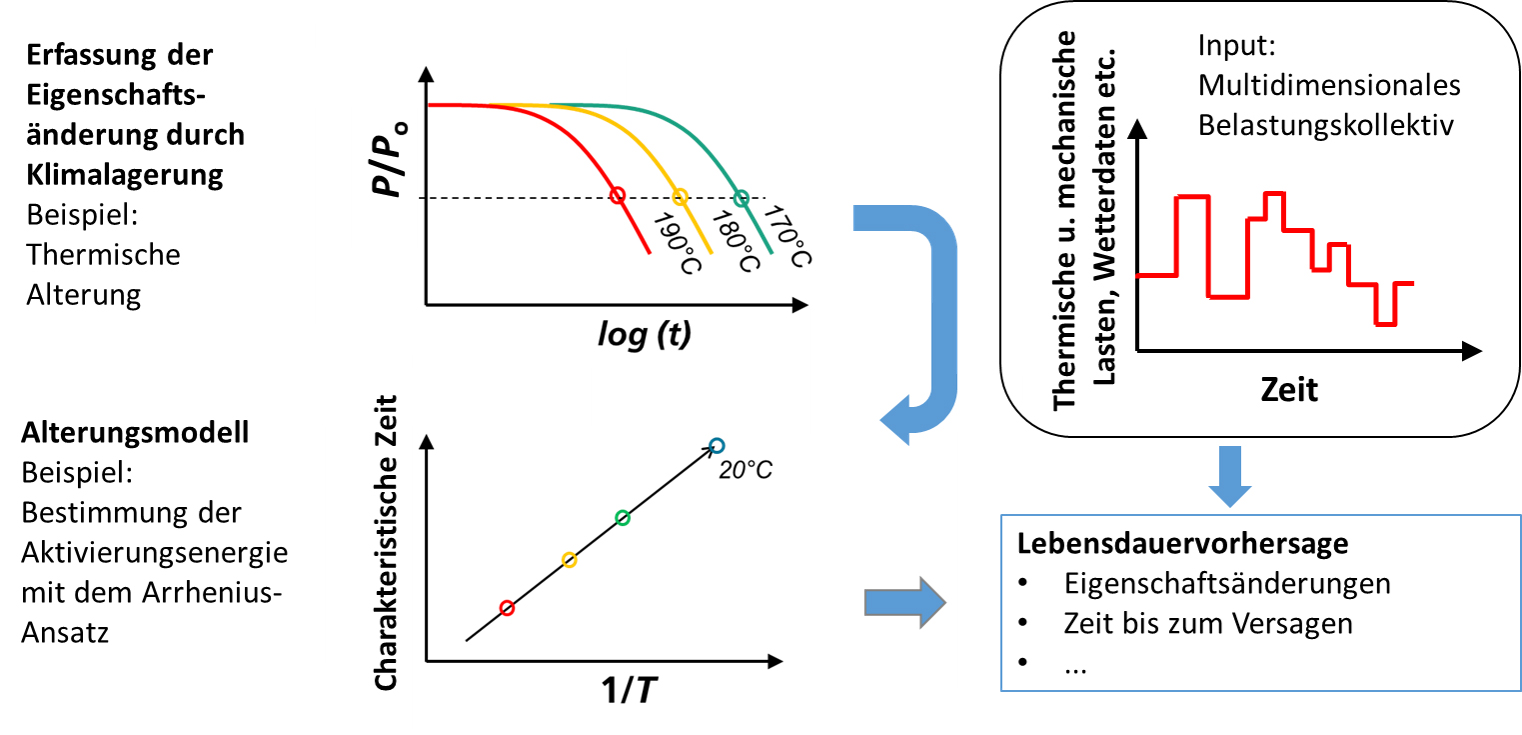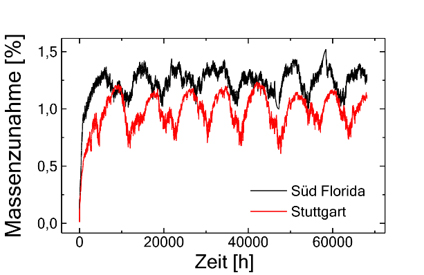plastic aging, service life, modeling




In order to guarantee the operational reliability of plastic components or polymer-based coating materials, reliable statements on service life that reflect the specific application as closely as possible are required. Examples of this include plastic components or coatings used outdoors, components subjected to widely varying thermal and mechanical loads, or pressure vessels for holding organic liquids at high temperatures. A reliable lifetime prediction is particularly important for safety-relevant plastic applications, such as containers for hazardous substances, load-bearing components or injection anchors for load-bearing fastenings.
Time-consuming and costly tests are required for material and product development and to reduce the probability of failure in service. Examples of this include climate storage, artificial weathering, creep tests and cyclic fatigue tests. The figures show examples from LBF's Plastics division.
In order to save on testing costs and development times, efforts are being made to accelerate the service life tests. However, there are material-specific limits on the acceleration of aging processes using increased temperatures or levels of irradiance. Attempts are also being made to remedy this by means of more complex test protocols, to make laboratory tests correspond more closely to aging under real conditions. At the same time, it is desirable to develop simulation methods for modeling complex aging processes in order to better assess the risk of failure for new materials or in new fields of application prior to market launch.
In recent years, time-resolved operational data (e.g. real-drive data) or site-specific weather data has become increasingly available. Numerical analysis of such data allows for improved test protocols to be developed. By implementing suitable material and aging models in software tools for lifetime prediction, it is already possible to model changes in material properties or critical states of stress or strain in real or fictitious load scenarios over long periods of time. Here, successive loads (e.g. temperature, humidity or strains) are weighted and superimposed for specified operating conditions, climatic zones or hypothetical application scenarios. Thus, using multi-year, time-resolved weather data (temperature, humidity, solar radiation) from Stuttgart, a site-specific weathering protocol for short-term weathering could be derived from simulations.
In a very similar way, using microclimate data from the engine compartment of a car for various driving conditions and a model for thermal activation for polyamide 6.6, it was possible to deduce test protocols for oven storage that simulate the state of health for a specified period of time spent driving. Conversely, it was possible to calculate changes in material properties (e.g. elongation at break, hardness, molar mass, crystallinity) as well as residual running times for a specified useful life. The progression of material damage can be attributed to the various operating conditions that occur during driving.
In the Fraunhofer LBF Plastics Department, scientists from the natural and engineering sciences work closely together to better understand the aging processes and failure mechanisms of plastics and to develop suitable material and service life models. For industrial partners, this can be used to develop test methods and test protocols that are tailored to the specific application. This knowledge has been incorporated into software tools for predicting property changes for arbitrary load collectives and lifetime prediction. By coupling the models and parameterizing them through aging experiments, practical load scenarios can be modeled and evaluated as early as the development phase. This makes it possible to shorten development times and reduce the risk of failure and incurring liability during use.
Some of the results were obtained as part of IGF project 20095N of the research associations “Forschungsgesellschaft für Pigmente und Lacke e.V.” (Research Society for Pigments and Paints, FPL) and “Forschungsgesellschaft Kunststoffe e.V.” (Research Society for Plastics, FGK), which was funded via the AiF (German Industrial Research Alliance) within the framework of the Program for the Promotion of Joint Industrial Research and Development (IGF) by the German Federal Ministry of Economics and Technology on the basis of a resolution of the German Bundestag. We would like to express our thanks for this financial support.